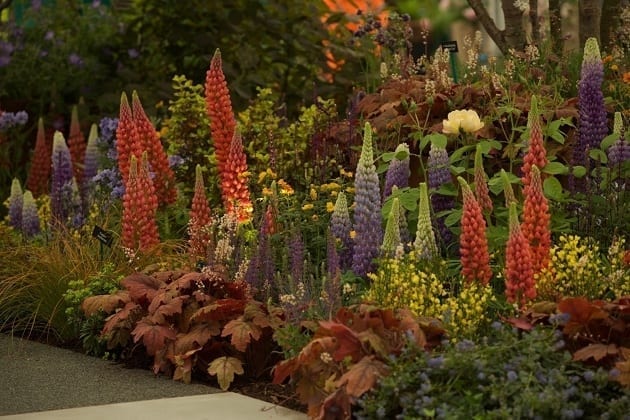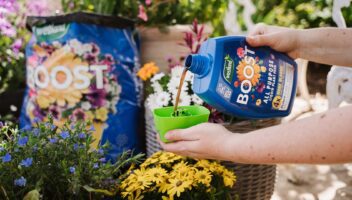Salvia | Ornamental Sage
The salvia genus contains close to 1,000 different species, including annuals, perennials, shrubs and herbs. All salvias are part of the mint family, that also includes the herbs rosemary and basil. Ornamental sage comes in many forms, with flowers ranging from white through blue and purple to pinks and reds. They are fantastic plants for beds, borders and containers; long-flowering throughout the summer, highly attractive to butterflies and bees and frequently with delightfully scented foliage. They do best when positioned in full sun with well-drained soil.
Salvia Varieties
Perennial salvias come in a range of colours and forms. We highlight a number of favourites, grown by our own Hillier Nurseries in Hampshire.
Salvia ‘Hot Lips’

Salvia ‘Hot Lips’ produces vibrant, eye-catching flower spikes in vividly contrasting red and white. Get closer and enjoy the sweet blackcurrant fragrance from its foliage.
Flowering time: July to October
Sun Requirements: Full sun
Soil: Well-drained soil
Hardiness: Hardy, but may need some protection over winter
Size: Grows to 90cm height x 60cm spread
Salvia ‘Love and Wishes’

A floriferous garden beauty producing masses of open-mouthed magenta blooms from May to November. The attractive dark stems complement the blooms wonderfully.
Flowering time: May to November
Sun Requirements: Full sun
Soil: Well-drained soil
Hardiness: Hardy, but may need some protection over winter
Size: Grows to 80cm height x 50cm spread
Salvia nemerosa ‘Caradonna’

A compact salvia that produces a mound of aromatic foliage, above which the rich purple flower spikes rise. Hardier than other varieties of perennial salvia, making it a really valuable addition to a sunny border.
Flowering time: June to October
Sun Requirements: Full sun
Soil: Well-drained soil
Hardiness: Fully hardy
Size: Grows to 50cm height x 50cm spread
Growing Guide
Caring for salvias is easy, if you plant them in the right location. Shrubby and hardy herbaceous salvias can be overwintered if they’re given good drainage and as much sun as possible. In autumn, perennial salvias will usually die back, with fresh new growth appearing in spring.
Planting
Plant salvias after all danger of frost has passed in the spring. Apply a generous 5-7cm (2-3in) mulch of well-rotted garden compost or manure around the base of the plant in spring.
Protection
Salvias should last the winter, especially in the South, but make sure it is planted in full sun in a sheltered spot with well-drained soil to increase its chances of survival.
Deadheading
To prolong flowering remove the flower spikes as soon they start to fade.
Planting Ideas
Salvias are drought-resistant plants. Create a whole border that will tolerate dry conditions by planting together with cistus, lupinus, heuchera and perovskia.

Salvia Fact
The name ‘salvia’ comes from the Latin word salvere, meaning ‘to heal’, as salvia has historically been known for its healing properties.





